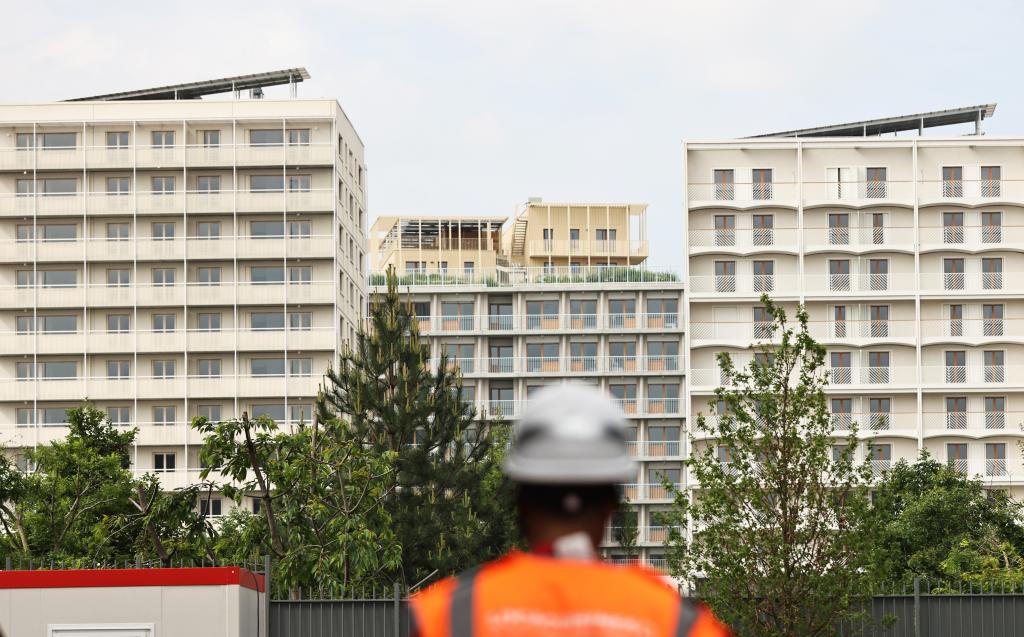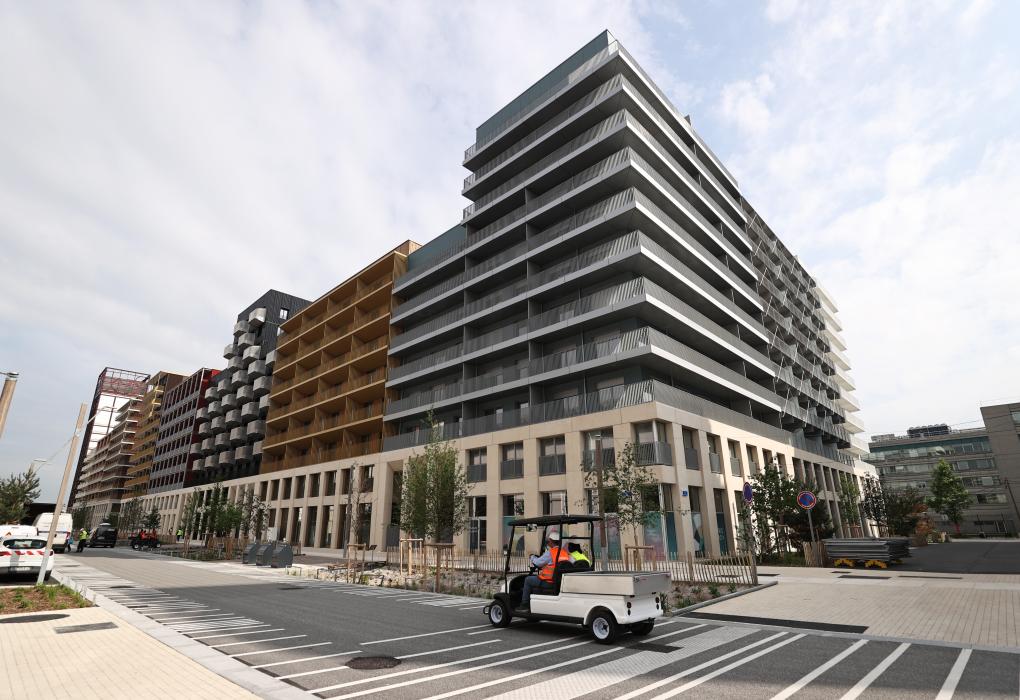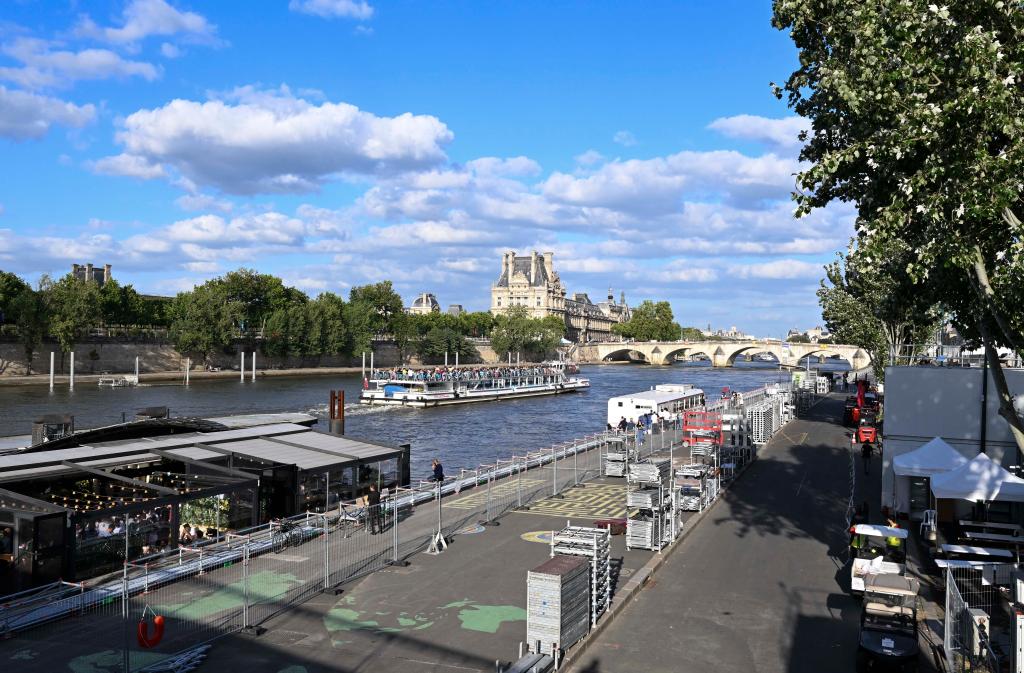What do you know about the Paris Olympics: In addition to not installing air conditioning, learn about other "green" actions
The Paris Olympics is about to open. When talking about the goals of this competition, Paris Organizing Committee Chairman Tony Esstangue said that reducing carbon emissions by 50% compared with the past two Summer Olympics is the Paris Organizing Committee's commitment to the world.
A hundred years ago, at the Paris Olympics, the first Olympic Village in Olympic history was born. At the next Paris Olympics a hundred years later, the Olympic Village focuses on green, environmental protection and sustainability concepts.

This is the building of the Olympic Village and Paralympic Village in Paris photographed on June 4. Solar panels are installed on the roof of the building. Photo by Xinhua Agency reporter Gao Jing
The Olympic Village of this Olympic Games makes full use of existing local building facilities, such as transforming the film and television base into a super-large restaurant with 3200 seats, transforming the film studio into an athlete training room, and using local medical school resources to form a comprehensive clinic. Above the transfer hall of the Olympic Village, a temporary solar photovoltaic roof has been installed. This roof not only provides shade for athletes, but also provides power to nearby buildings.
In order to fully save energy and reduce emissions, and based on historical weather characteristics, the French did not install air conditioners in the Olympic Village. So how to let athletes find a touch of coolness in the heat wave that is likely to occur in Paris this summer? The Olympic Village has its own solutions: light-colored floor tiles laid outdoors can enhance light reflection and avoid the heat island effect; the geographical location adjacent to the Seine River can enhance air circulation; and a geothermal cooling system can be used to pump cold water into the apartment to achieve a temperature difference of "6 to 10 degrees Celsius" indoors and outdoors.

This is the building of the Olympic Village and Paralympic Village in Paris photographed on June 4. Photo by Xinhua Agency reporter Gao Jing
In addition, after the Olympics, the Olympic Village will be transformed into a community of 3000 houses. It is reported that these buildings will be built using renewable energy and the roofs will be used to develop urban agriculture.
Paris is the "capital of romance" and a city of sports. In Paris, there are only three newly built venues for this Olympics-the Porte de La Chapelle Stadium, which holds badminton and rhythmic gymnastics competitions, the Aquatic Sports Center, which holds synchronized swimming, water polo and diving competitions, and Le Bourget Sports and Climbing Center in the northeastern suburbs of Paris. Most other competitions will be held in existing venues as well as temporary venues.
At attractions such as Place de la Concorde, Invalides, and the Eiffel Tower, temporary venues will allow athletes to have a fresh competition experience. Rapatian, president of the International Cycling Federation, said that during the Paris Olympics, the entire Paris was an "open museum" and audiences could experience the beauty of Paris closest.

This is the stands of the beach volleyball stadium of the Paris Olympics near the Eiffel Tower taken on July 10. Photo by Xinhua Agency reporter He Changshan
In order to allow more people to achieve "green travel", the Ile-de-France region, where Paris is located, will build a new 400-kilometer-long Olympic bicycle lane for this Olympic Games to achieve the goal of "100% cycling". In addition, Paris is also equipped with 46,000 shared bicycles and deployed 27,000 bicycle parking spaces, of which 10,000 parking spaces and some bicycle lanes will be permanently preserved, which will serve as an Olympic legacy to contribute to energy conservation and carbon reduction for a long time.
On the Seine River, a floating solar power station attracts attention, and the pollution control of the river is also in full swing. According to plans, these projects will allow the Seine River to provide renewable energy for the Olympics and meet the requirements of Olympic marathon swimming and triathlon competitions. After the conclusion of the Paris Olympics, the Seine River will also be restored as a venue for sports and leisure activities. By the summer of 2025, it will become an "open-air swimming pool" and be open to the public.

This is the construction control area related to the opening ceremony on the Seine River (photographed on July 4). Photo by Xinhua Agency reporter He Changshan
In order to reduce carbon emissions scientifically, the Paris Olympic Organizing Committee, the French Ministry of Sports and the Olympic Committee jointly developed an application called "Climate Coach" to estimate the carbon emissions of Olympic Organizing Committee staff and other program users from aspects such as catering, accommodation, transportation, logistics, etc., and propose practical emission reduction measures such as "choosing to take public transportation to the venue" and "eating more food with more vegetables".
As one of the signatories of the United Nations "Sport for Climate Action Framework", the Paris Olympic Organizing Committee aims to use the opportunity of hosting the 2024 Olympic Games to comprehensively promote the implementation of emission reduction measures within France. For those unavoidable carbon emissions, the Paris Olympic Organizing Committee said it would neutralize carbon emissions by funding projects around the world that help combat global warming, such as afforestation and renewable energy development projects.
The International Olympic Committee's official website issued a document stating that the Paris Olympics and Paralympics will set a new benchmark for fulfilling environmental responsibilities and will demonstrate how to hold global sports events in an era of accelerating climate change.







